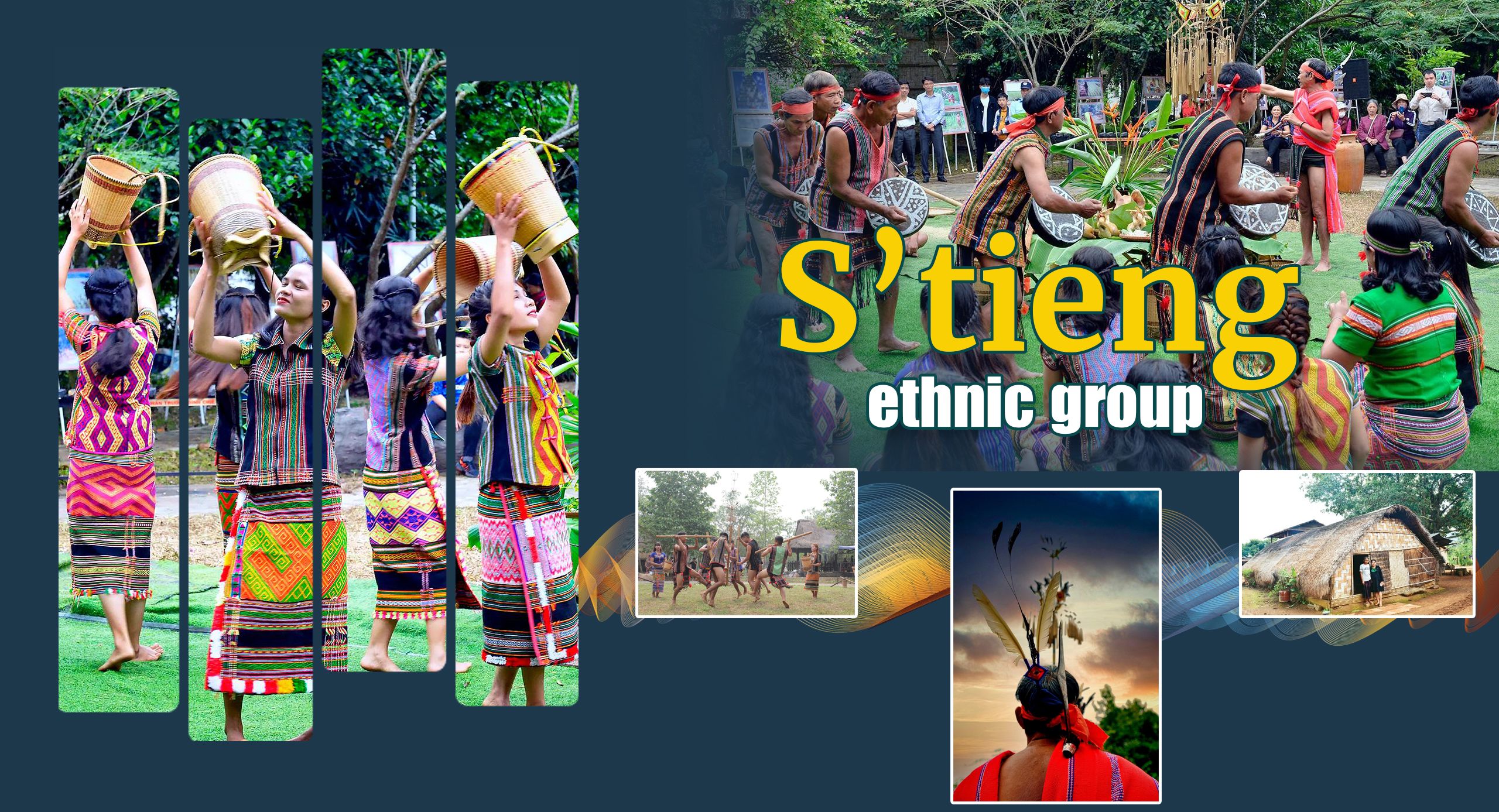
Although their scale is not too large compared to other ethnic groups in Vietnam, the S’tieng ethnic group has formed a cohesive community with their own identity, becoming a unique piece in the picture of 54 Vietnamese ethnic groups.
1. Historical
Because the S’tieng people have no written language and no documents about their native history, the origin of this ethnic group is mainly based on folk legends and some results of archaeological and anthropological research.
The S’tieng ethnic group, who refer to themselves as Dieng, also has many other names such as: Xa Dieng, Xo Dieng, Xa Chieng. It is an ethnic group that has long been living in the Truong Son region, Central Highlands, and the Eastern South.
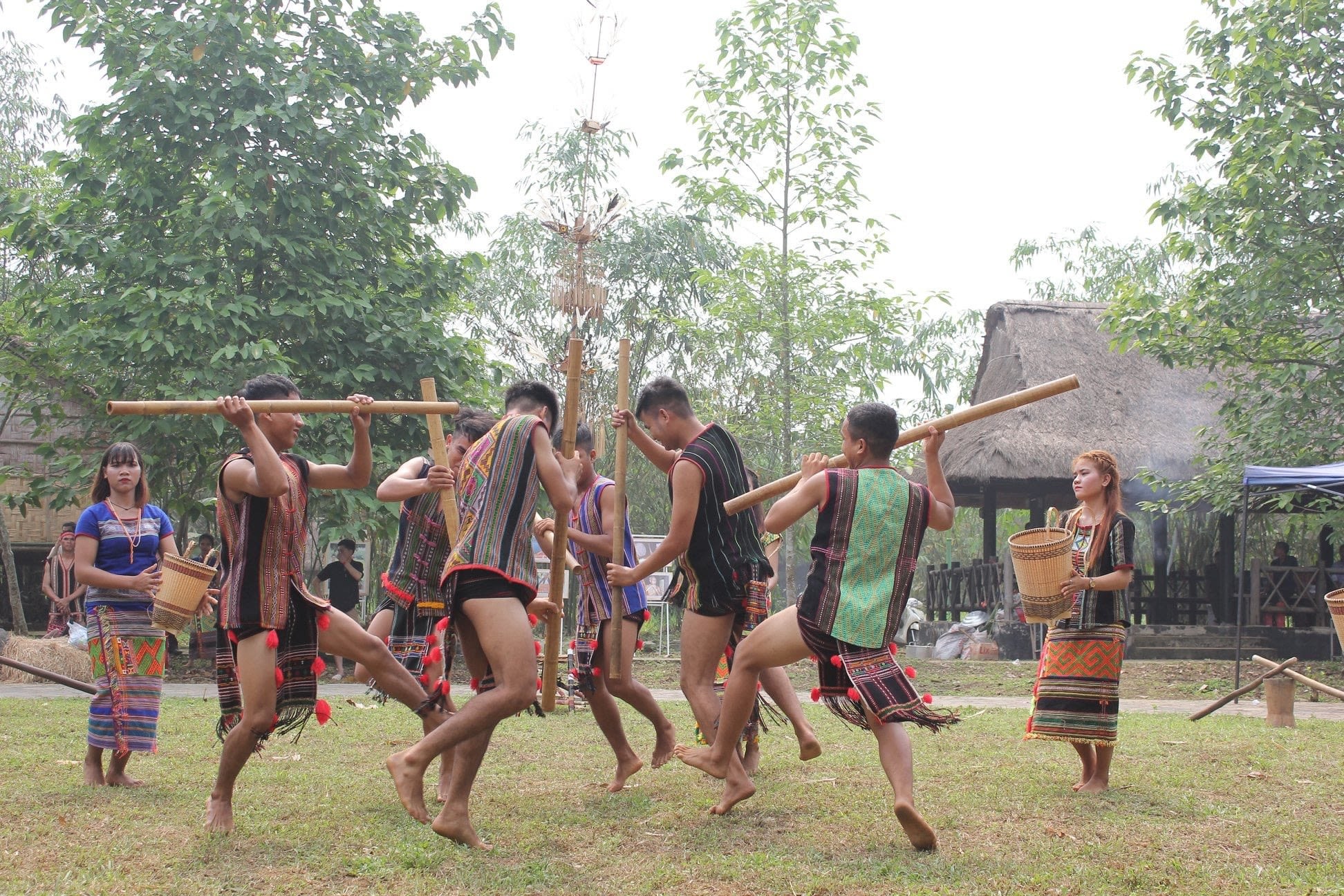
S’tieng men and women in traditional costumes. (Photo: Vietnam National Village for Ethnic Culture and Tourism)
S’tieng men and women in traditional costumes. (Photo: Vietnam National Village for Ethnic Culture and Tourism)
The S’tieng ethnic group is considered to have many local groups, of which the typical four groups are Bu Dip, Bu Dek, Bulac and Bu Lo.
2. Geographical distribution
The S’tieng people reside concentratedly in Binh Phuoc Province and some localities in neighbouring provinces.
3. Population, language
- Population: According to census data of 53 ethnic minorities on April 1, 2019, the total population of the S’tieng people reached 100,752, of whom 48,391 are male and 52,361 are female. Household size: 4.4 people/household. Percentage of population living in rural areas: 95.1%.
- Language: The S’tieng people speak S’tieng, a language belonging to the Mon-Khmer language group in the Austroasiatic language family.
4. Main features
- Traditional social institutions: The S’tieng people live in villages, and call their residence unit “bon”, “poh” or “wang” depending on the locality they live in. In a traditional S’tieng village, the person with the highest status is the village head (tom wang or tom bon). These are the people chosen from among the heads of the clan or the bu kuong (village elders)
In addition to the village head, in S’tieng ethnic society, people with high status in the village are “bu kuong” (village elders) - these are prestigious and knowledgeable elders. Traditional S’tieng society is basically divided into three classes. The first class is the rich (bu Khung). They are the heads of families with many precious gongs, jars, buffaloes, elephants and servants in the house. The second class are the free but poor (luoi). And the third class are the servants (kon dek).
- Housing: The S’tieng people live in long or half-stilt houses. According to the old customs, each village consisted of only a few long houses, where many generations of S’tieng people lived together. But today, the S’tieng people mainly live in short houses in separate households.
- Costume: Normally, S’tieng men wear loincloths and are bare backed, while women wear shirts and skirts. They like to wear a lot of jewellery, even one arm wears more than 20 bracelets. They also like to wear large ivory earrings. Currently, S’tieng men dress like Vietnamese people, while women wear blouses and shirts.
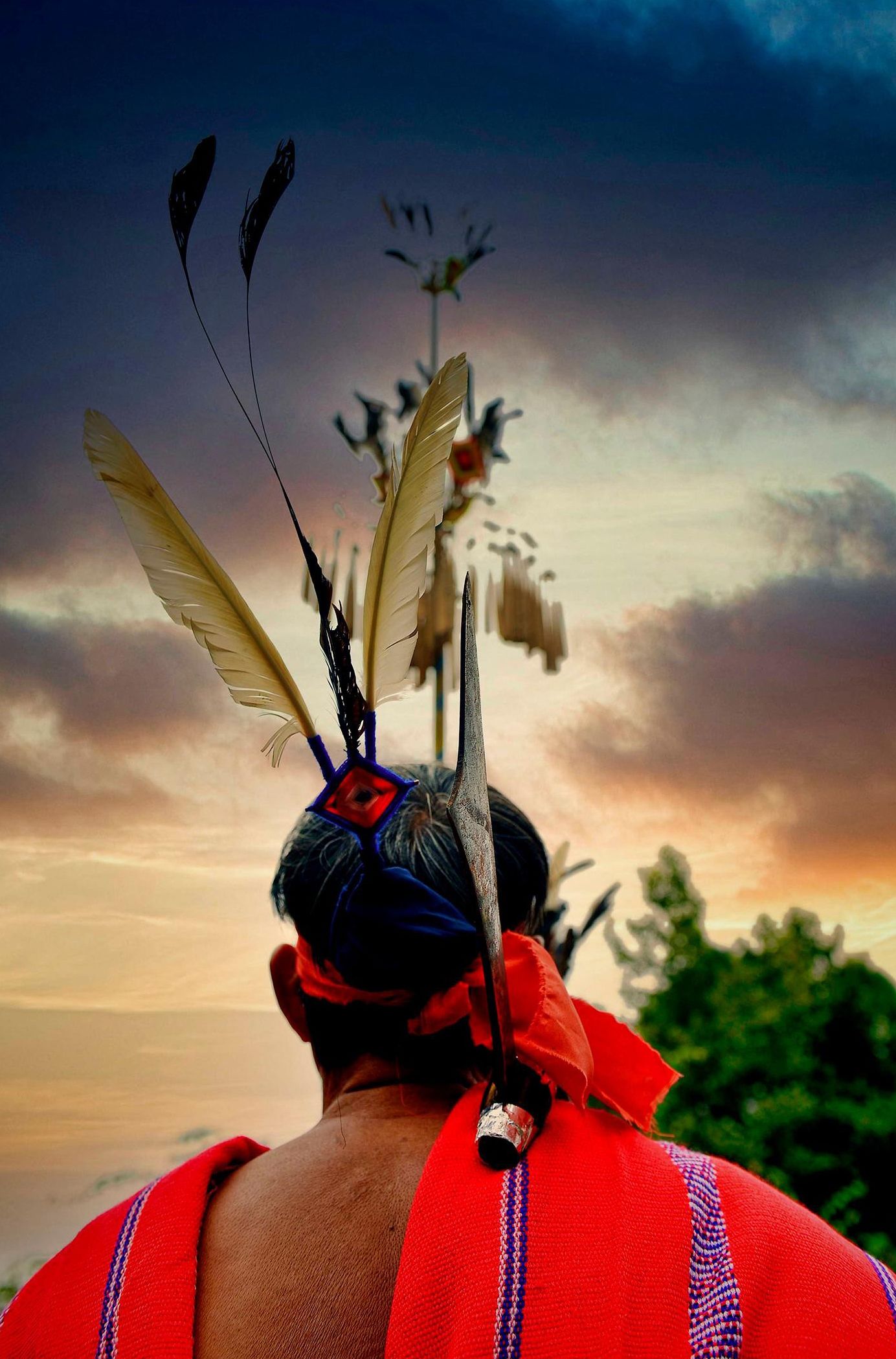
Photo: Thanh Dat
Photo: Thanh Dat
- Religion and beliefs: The S’tieng people believe in polytheistic religion, all things are spiritual, everything has a soul. So they worshiped the gods of thunder, heaven, earth, moon, sun, mountains, rivers, etc.
- Cuisine: The S’tieng often eat rice cooked from ordinary rice. The main food of the people is rice, boiled cassava, fish and vegetables. Previously, the S’tieng people had the habit of eating with their hands, but now they use spoons and chopsticks.
- Musical instruments: S’tieng people have a great love for music. The most important musical instrument and one of the precious treasures in their traditional society are gongs.
- Education: According to census data of 53 ethnic minorities on April 1, 2019: the rate of people aged 15 and over who can read and write in general: 62.6%; the rate of people attending primary school: 99.2%; Percentage of people attending secondary school: 57.3%; Proportion of people attending high school: 17.7%. Meanwhile, the rate of out-of-school children: 35.3%.
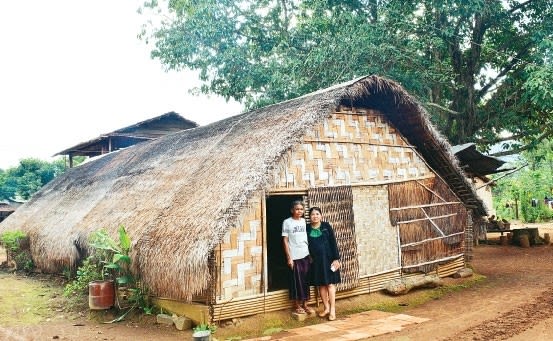
The long house of the S’tieng people. (Photo: Ethnicity and Development Newspaper)
The long house of the S’tieng people. (Photo: Ethnicity and Development Newspaper)
- Marriage: The S’tieng ethnic group practices intra-clan marriage and clan exogamy.
- Festivals: There are many different large and small worshiping ceremonies in the life of the S’tieng people. Of which, the buffalo stabbing festival is the biggest. The New Year holiday of the S’tieng is called “straw offering ceremony”, is conducted after threshing of upland rice is finished, before burning the next crop, in order to give thanks to the rice god after a swidden season.
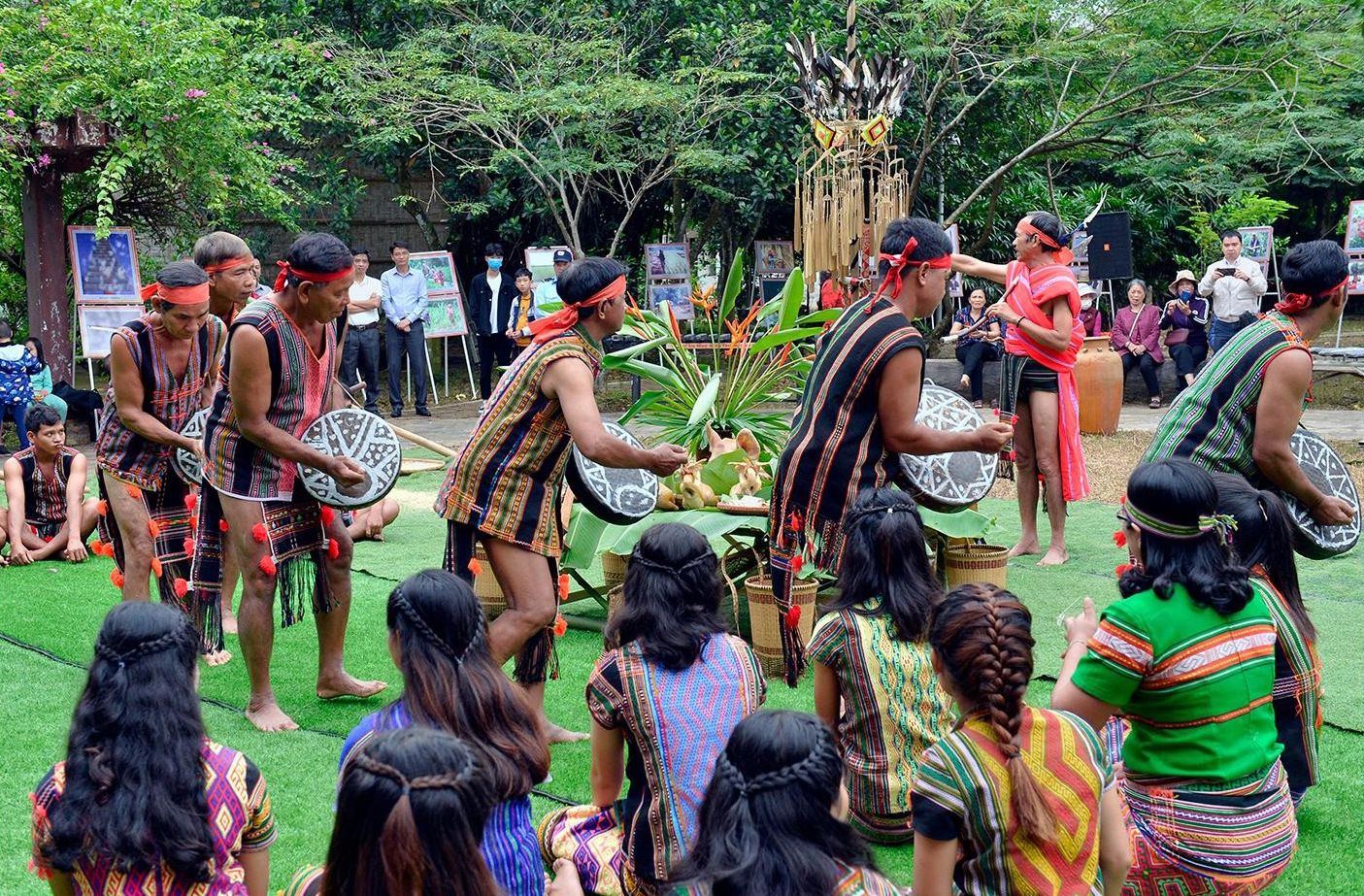
Photo: Thanh Dat
Photo: Thanh Dat
5. Economic conditions
The S’tieng people live mainly on agriculture. The Bu Lo group lives higher and deeper and is completely devoted to farming. As for the Bu Deh (Bu Dek) group in the lowlands, they have been farming rice fields since about 100 years ago. The farming method of the people is still rudimentary, with farming tools mainly consisting of axes and knives, bamboo rakes, etc.
In addition, economic activities of gathering, hunting, and raising livestock and poultry bring diverse additional food sources to them. Furthermore, the S’tieng people also practice weaving and knitting. They often exchange goods with Vietnamese, Khmer, Mnong, Ma and even with people in Cambodia.
According to census data of 53 ethnic minorities on April 1, 2019: Poverty rate: 3.98%; Proportion of trained workers with diplomas and certificates: 2.1%; Proportion of employees working in the non-agricultural sector: 31.8%; Proportion of poor households: 13.8%; Proportion of near-poor households: 8.5%; Proportion of employees working in management or technical qualification at high and middle level: 0.3%.